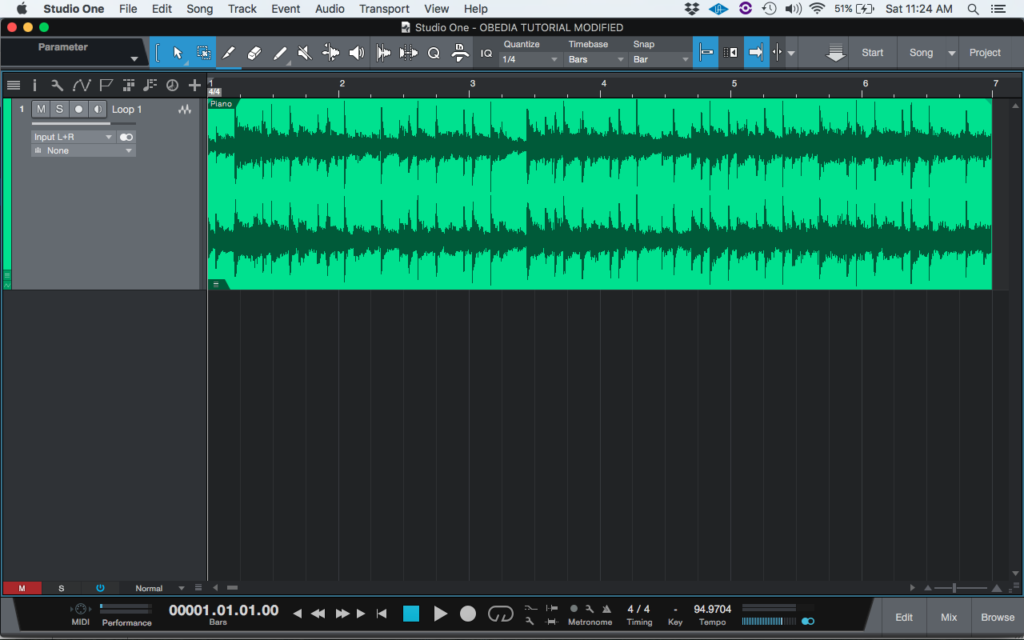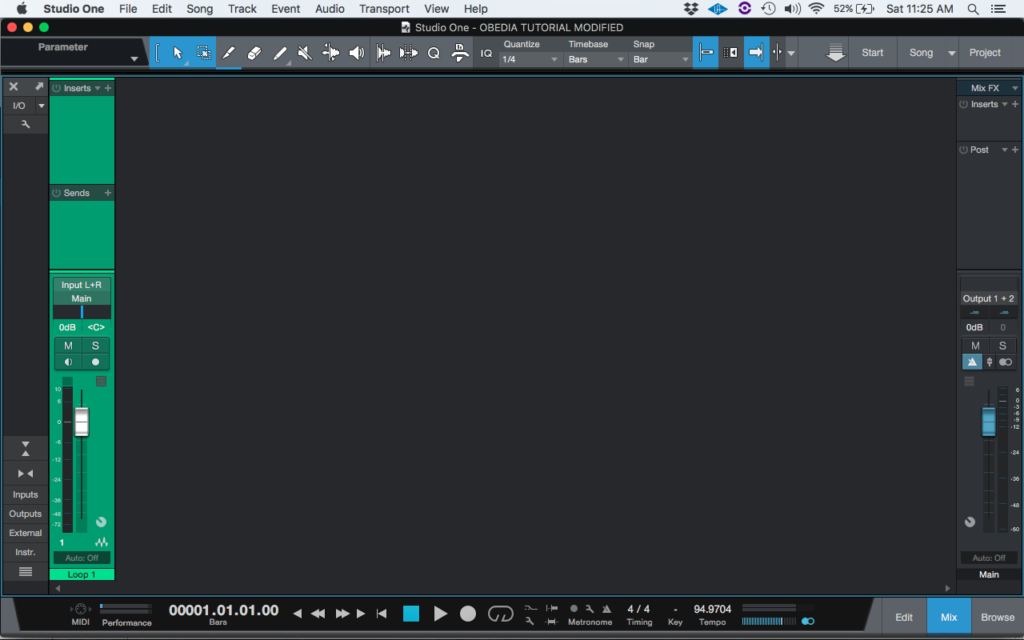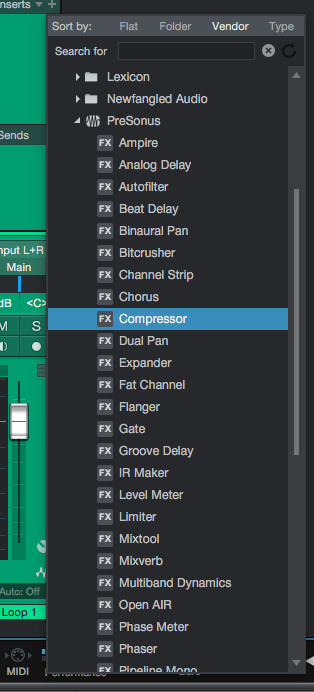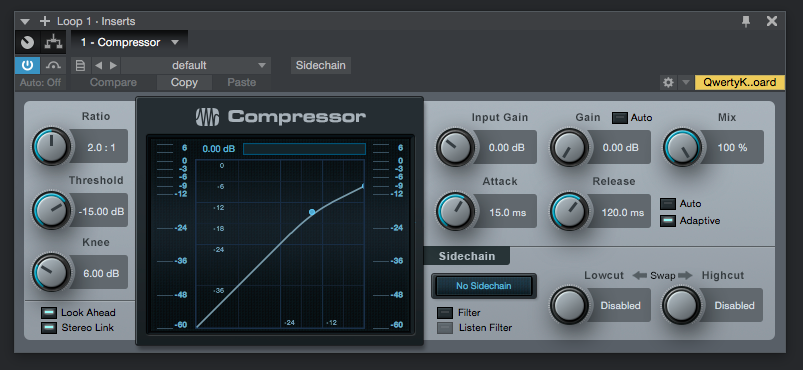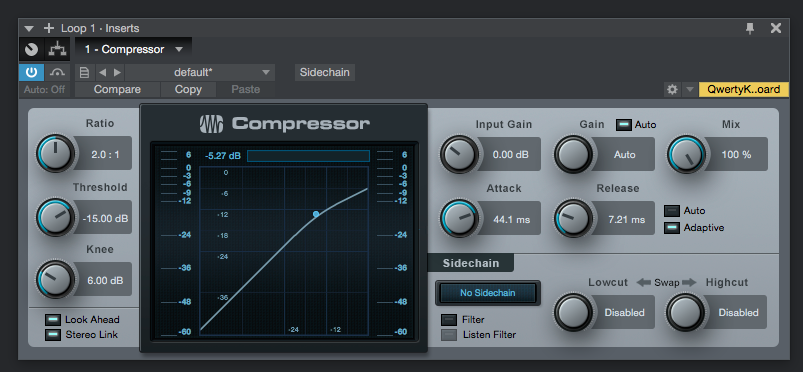The following tutorial shows the user how to use the Presonus Compressor plugin in Studio One 4.
Need a Pro Audio laptop to run Presonus Studio One 4 software and all of its features at its best? Check out the MC Mobile line of Pro Audio Laptops from PCAudioLabs.
On the modern days of audio mixing, the digital tools that engineers use in order to shape the recorded sound are called Plugins. Plugins can emulate the behavior of vintage analog pieces of gear, or simply act as clean/linear digital signal processors, performing tasks such as equalization, compression, limiting, expansion, gating, time-domain effects, etc. Studio One 4 comes with a variety of proprietary plugins that can help the user mix a music production completely “in-the-box”.
One of the most used processors that come with Studio One is the Compressor, which can be defined as a device that affects the dynamic range of a signal by bringing down the level of the loudest parts, making the loud and quiet parts closer together in volume, ultimately yielding volume differences that are less obvious.
For the purpose of this tutorial, we will explain how to use the Presonus Compressor plugin in Studio One 4:
- Open or create a new Studio One 4 song:
2. Open and maximize the MIX tab:
3. From the inserts list of the track, select “Compressor”:
The Compressor plugin window will open as:
It is easy to see from the previous picture, the Compressor plugin has several parameters that can be explained as:
- Ratio: This knob adjusts the compression range. It can vary from 1:1 (no compression) to 20:1 (limiting).
- Threshold: This knob lets the user set a level at which incoming signals surpassing it, will be compressed.
- Knee: This knob adjusts the soft-knee width.
- Look Ahead: This button can engage/disengage the 2 ms Look Ahead function.
- Stereo Link: When this button is engaged, the compressor will sum a stereo input signal for signal-power detection.
- Input Gain: This knob can reduce or increase the incoming signal’s gain.
- Attack: This knob adjusts the attack time for dynamics processing.
- Release: This knob adjusts the release time for dynamics processing.
- Gain: This knob adjusts the output gain of the compressor.
- Auto Gain: When this button is engaged, the compressor will react so that a 0 dB input level results in a 0 dB output level.
- Mix: This knob lets the user set a mix between the wet (affected) and dry (unaffected) signals running through the compressor, which can be useful for parallel processing purposes.
- Auto: When engaged, the compressor will automatically set varying attack and release settings based on the program material.
- Adaptive: When engaged. the compressor will automatically vary the attack and release times in order to avoid pumping, resulting in smoother (more transparent) compression.
For the purpose of this tutorial, we will use the Compressor to reduce in a very subtle way the louder parts of the Loop track. This will be done by applying gentle 2:1 ratio with slow attack, fast release, and auto gain. The Compressor plugin should be set as:
- Ratio: 2:1.
- Threshold: -15 dB.
- Knee: 6 dB.
- Look Ahead: ON.
- Stereo Link: ON.
- Input Gain: 0 dB.
- Attack: 44.1 ms.
- Release: 7.21 ms.
- Gain: AUTO.
- Auto Gain: ON.
- Mix: 100%.
- Auto: OFF.
- Adaptive: ON.
4. Apply the previous configuration, and the Compressor plugin should look like this:
At this point we have successfully explained how to use and configure the Compressor plugin in Studio One 4. The tutorial has now finished.
Using Presonus Studio One 4 software to produce music would be ideal with one of our professionally designed PCAudioLabs Systems due our high-performance specifications in order to work with any of the Digital Audio Workstations supported. If you would like to order one of our PCAudioLabs computers, please call us at 615-933-6775 or click this link for our website.

